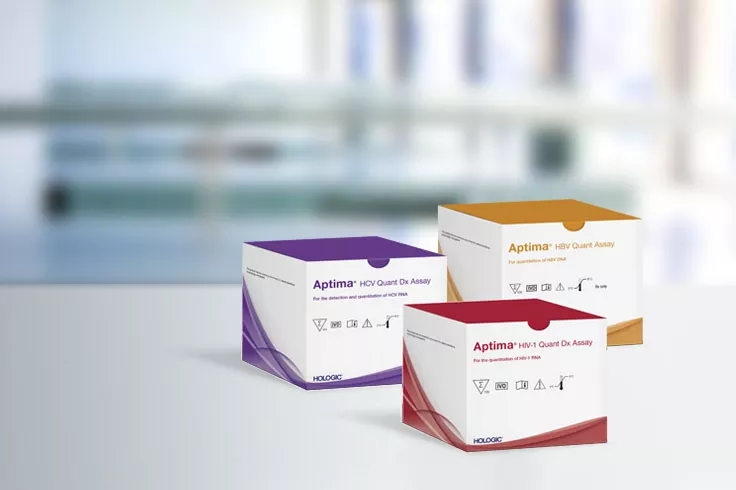The Importance of Testing in Ending the HIV Epidemic

National HIV Testing Day, observed annually on June 27th, serves as a critical reminder of the importance HIV testing plays in prevention and awareness. In honor of this day, we will explore the HIV epidemic, what can be done to stop it, and the role that testing must play in ending the epidemic.
State of the Epidemic: HIV in America
As we enter the fifth decade of the HIV/AIDS epidemic, we are confronted with a sobering reality - over 700,000 American lives lost to HIV-related illness.1 As of 2021, an estimated 1.2 million Americans were living with HIV and 13% of those, or 156,000 Americans, were not aware of their status.2 The majority of new infections are sexually transmitted, but as the opioid crisis is ongoing, injected drug use accounted for 8% of new infections.1,2 The HIV/AIDS epidemic continues to be a pressing public health crisis in the United States.
A Reason to Hope
Amidst the grim statistics, there is a beacon of hope. Decades of relentless research have resulted in highly effective antiretroviral therapies (ART). These medications which interfere with the replication of HIV have transformed a once fatal diagnosis into a manageable chronic health condition.3 Moreover, these life-saving medications can also be administered to HIV-negative individuals as Pre-exposure prophylaxis (PrEP) which has proven to be up to 99% effective in preventing HIV transmission when taken consistently as prescribed.4
Pillars of Response
In 2019, the U.S. Department of Health and Human Services launched a bold initiative with an ambitious goal - to reduce new infections by 90% within ten years.1 The initiative is built on four pillars:
Diagnose all individuals with HIV as early as possible after infection.
HIV infection rapidly and effectively to achieve sustained viral suppression.
Prevent at-risk individuals from acquiring HIV infection, including the use of PrEP.
Rapidly detect and respond to emerging clusters of HIV infection to further reduce new transmissions.1
Testing Matters
At the core of each pillar lies a common thread - the need for greater HIV testing. Studies show that early diagnosis and treatment of HIV infection improves the course of the disease and the risk of transmission, playing a key role in the fight against HIV.5 HIV is both treatable and preventable, but only when people are aware of their status.
The Effects of Stigma
Stigma, the discrimination against or disapproval of a certain group based on perceived characteristics can have a profound impact on people living with and at risk for HIV. People living with HIV can experience stigma in many forms, including feelings of shame, social isolation, and reduced access to care. However, stigma also affects those who do not know their status.6 It has been shown that the fear of stigma not only reduces an individual’s likelihood of getting tested but can also lower their perception of risk.6
What Can Be Done?
The success of campaigns such as “Undetectable = Untransmittable” (U = U) have demonstrated that stigma can be effectively addressed.1 Future campaigns targeting HIV-negative individuals may prove useful in increasing the number of people on PrEP and thus reducing the spread of the virus.6 Increasing access to testing and normalizing HIV screening during routine healthcare interactions can also go a long way towards eliminating this epidemic.1
We have the tools. We need the execution.
What Can Laboratory Professionals Do?
Laboratory professionals are the unsung heroes in the fight against HIV. Your work is critical in diagnosing and monitoring HIV, and your role extends beyond the lab.
Educate and Advocate: Use your expertise to educate others about the importance of HIV testing and the role it plays in prevention and treatment. Advocate for routine HIV screening and the use of PrEP.
Stay Informed: Keep up to date on latest research and advancements in HIV testing and treatment. This will enable you to provide the most accurate and timely information to patients and healthcare providers.
Improve Access: Work with your organization to improve access to HIV testing. This could include offering extended hours for testing, providing mobile testing units in high-risk areas, or partnering with community organizations to offer testing at local events.
Reduce Stigma: Foster a non-judgmental and supportive environment within your organization. This can help reduce the stigma associated with HIV testing and encourage more people to get tested.
Collaborate: Collaborate with healthcare providers, public health officials, and community organizations to develop and implement local strategies for increasing HIV testing and reducing new infections.
The fight against HIV is a collective effort. Together, we can make a difference.


